(NaturalNews Investigations) We all know that working out and staying fit is one of the most effective ways a person can stay healthy. However, unpredictable weather and hectic work schedules can sometimes prevent us from completing our exercise routines outdoors, leaving us no choice but to head for the gym.
While fitness centers have their benefits, they�re also hosts to an abundance of dangerous germs that can pose serious health risks ranging from the common cold to diarrhea and even hepatitis A.
In this investigation, Natural News examined and identified the 10 dirtiest, germ-infested items at a typical gym. This shocking report features a photograph of each object or place you should either avoid altogether or, at the very minimum, take proper precautions when using or touching.
Even more disturbing than the amount and type of germs found in the gym is how long they can survive on surfaces and equipment -- a whopping three days!
Yep, for 72 hours, gym-germs can survive best on hard surfaces even after being sanitized twice a day, according to
a study conducted by UC Irvine.
*Note, the following list is not in any order of importance, but simply the 10 most important objects or places.
Let�s start with no. 10.
#10 Cardio equipment

A study featured on Askmen.com, showed that cardio equipment with seats, particularly those with seats made from a foamy material, housed frightening germs like Staphylococcus, E. coli, fungi and yeast.
Staphylococcus aureus can be very deadly; in fact. it�s the leading cause of fatal hospital-acquired infections because of its high resistance to most antibiotics treatments.
If you manage to become infected with
E. coli, you can experience problematic symptoms such as severe stomach cramps, vomiting and, in extreme cases, even kidney failure.
While many people frequently clean off their sweat and germs after using equipment, oftentimes the germs aren�t fully killed. To avoid contact with gym-germs like these, make sure to thoroughly clean equipment both before and after use, allowing the sanitizer to completely air-dry.
#9 Swimming pool
Not all gyms are equipped with a swimming pool, but if yours is, watch out.
Although most pools are treated with chlorine to reduce bacteria, the water often contains
Cryptosporidium, a microscopic parasite commonly known as �Crypto� that causes diarrhea and happens to be chlorine resistant.
Also, the smellier the pool, the dirtier. When microorganisms collide with chlorine, it heightens the chemical smell.
The best way to protect yourself from this diarrhea-causing parasite is to wear a swim cap, nose and ear plugs, and goggles while swimming. Make sure to rinse off afterward.
Educate yourself and check with the gym on their cleaning policies. Don�t be afraid to ask for documentation of pH level testing.
#8 TV/Radio devices

TV and radio devices located on the cardio equipment that control the gym�s electronics have been known to host a variety of dangerous bacteria.
This area, which nearly everyone�s sweaty hands touch, but is often forgotten (even by a germaphobe like myself), is important to clean thoroughly.
Many avoid these devices and use their personal cell phones while exercising. If this is the case, make sure to sanitize before and after your workout, and avoid touching your face after contact with your music device.
# 7 Yoga practice, Zumba or aerobics class
Any fitness classes drawing a sizeable crowd can be a hotbed for airborne illnesses such as
influenza, respiratory disease or the common cold.
If possible, stay away from coughing or seemingly sick people. Cleaning the floor or mat you�ll be exercising on prior to your workout can drastically decrease your germ exposure.
Always make sure to wash your hands with hot water and soap frequently throughout the day, particularly before and after completing a fitness class.
#6 Showers and locker rooms
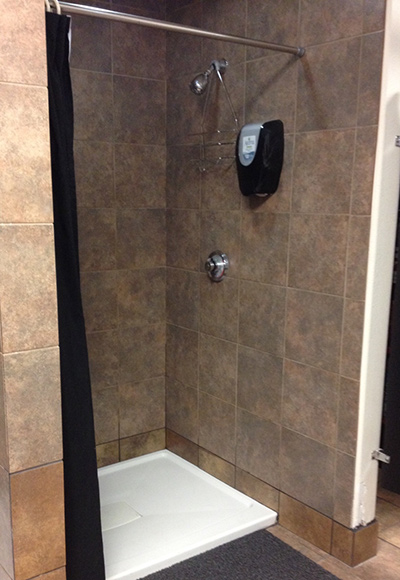
Hot and humid locker rooms and showers at the gym are a germ�s paradise, providing the perfect environment for bugs like strep and MRSA (methicillin-resistant
Staphylococcus aureus) to thrive.
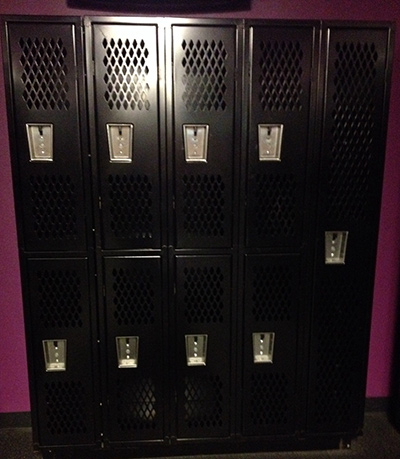
Depending on your gym�s hygiene, benches, lockers and items such as shampoo and soap dispensers can carry aggressive bacteria that easily spread through contact with others.
It�s best not to sit on benches naked or walk around barefoot. Fecal matter and other outdoor debris can be tracked in on shoes, causing
warts, ringworm, athlete�s foot, the flu and even hepatitis A.
#5 Weight changing levers
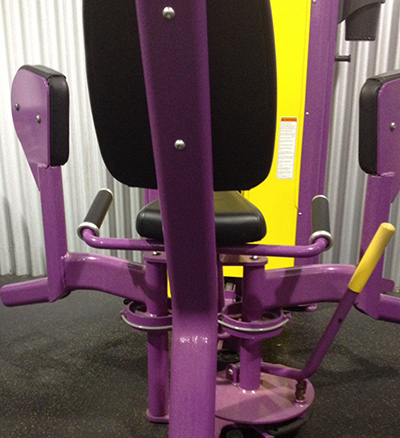
Another item that is habitually forgotten about is the lever used to change the weight stack on exercise machines.
Gym-goers often wipe down areas such as seats and handle bars but almost never clean the lever that everyone touches each time they use the machine.
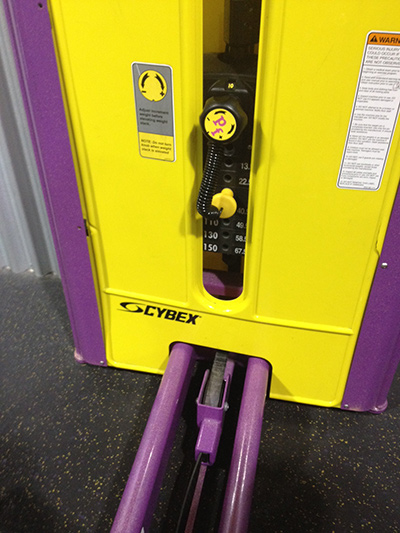
A
study conducted by the Clinical Journal of Sports Medicine found that 63 percent of gym equipment tested positive for the rhinovirus, which causes the common cold.
#4 Sports/activity equipment
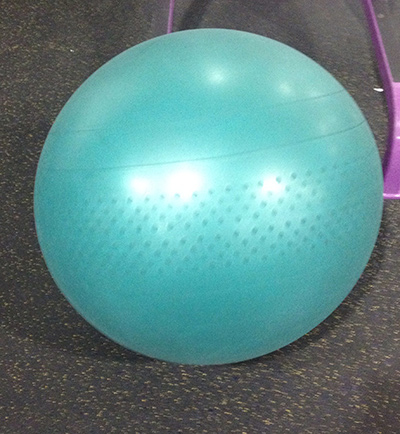
Sports and activity equipment rented out by the gym, such as racquetball rackets, basketballs and yoga balls, are particularly prone to collecting germs.
The study done by UC Irvine found that, after gathering bacteria from a basketball court, including the players' hands and the basketball,
Staphylococcus aureus was found on both.
Even when researches sterilized the ball before the game, it still carried Staph from the floor to the players.
To avoid being infected with
Staph, reftrain from touching your face during fitness activities and always wash your hands with soap and hot water after your workout.
# 3 Exercise/stretching mats
This is one of those places where people tend to question whether or not they should clean it...
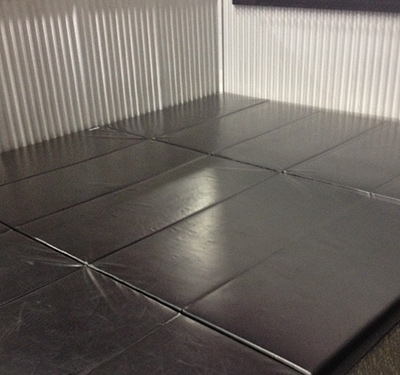
...simply because it�s a large area, making it difficult to quickly disinfect.
Since these mats are so frequently used by many people, they too are a hotbed for catching a
Staph infection.
If possible, always bring your own mat for stretching, or place a towel between you and the mat to avoid direct contact.
#2 Free weights
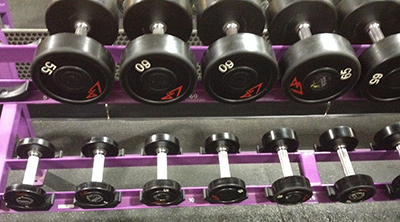
Free weights are sort of a no brainer.
They�re arguably one of the most used objects in the gym, and even though they�re used frequently, they�re almost never cleaned, especially after each use.
Free weights typically have a hard surface that�s ideal for hosting germs (as opposed to fabrics where they perish more quickly).
The best way to protect yourself when using free weights is to disinfect before use and avoid touching your face until you wash your hands.
#1 Water fountains
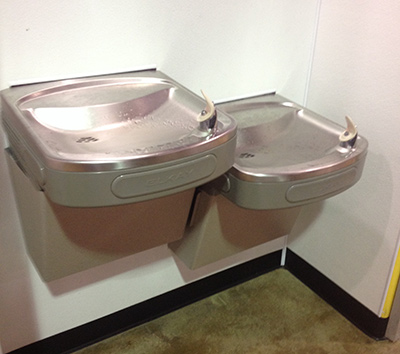
Research shows that more germs are found on and around drinking fountains than on toilets or in showers.
Not only does the fountain spout support germs, but the button used to activate the stream of water bears innumerable types of bacteria.
Always bring your own water bottle to the gym when exercising. A twist off top is the cleanest and safest.
Make sure to rinse out the bottle daily to prevent bacteria reproduction.
gym, germs, filthy objects, yoga mats, staph infections, e. coli